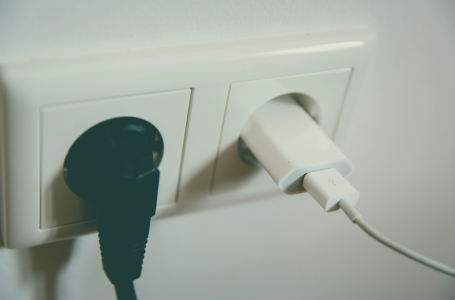Struggling with energy costs? Here’s how you can slash $123 off your electricity bills
Families across Australia are feeling the financial strain of a tough year and quickly realising that every dollar counts.
Thankfully, there is a way you can save a small fortune on your energy bills without having to sacrifice any of the basic appliances that you need to keep your household running smoothly.
According to new calculations by Canstar Blue across homes in south-east Queensland, it could be possible to save up to $123 a year on your electricity bills.
What is this life-saving technique, you might ask? It's something called ‘phantom power’.
Much like a phantom from a ghost story, this energy drain is almost invisible and difficult to detect. Phantom power occurs when common household appliances quietly suck up energy even when not actively used.
'If something's got a flashing light, it's showing you the time or runs by remote control, it's definitely using standby power,' said Christine Seib of Canstar Blue.
Smart TVs, gaming consoles, washing machines, microwaves—even the humble computer monitor—are all common culprits of phantom power.
Wi-Fi modems are also surprisingly high offenders. ‘Wi-Fi modems are a surprisingly high standby power user [because] it's switched on all the time and active,’ Ms Seib explained.
Gaming consoles cost up to $24.60 per year if left on standby mode, and the computer monitor on standby adds about $2.73 a year to your bill.
Meanwhile, microwaves and washing machines generate an extra $10.93 annually when not in use.
And if you’re using an air conditioner, it’s sapping energy and could cost you an extra $5.47 a year when left on standby.
The appliance with the highest phantom power is a smart TV, generating an additional $32.80 a year.
Now, if you’re tired of paying for electricity that isn’t being actively used, you can cut off the energy supply of these and any other appliances at the wall when you’re not using them.
However, this isn’t a practical solution for everyone—not to mention the fact that it can also be dangerous depending on the device.
A far safer alternative is to invest in a ‘smart power board’. These devices are specifically designed to detect when an appliance should be cut off from its energy supply and then turn it off.
If you're not keen on spending money on a new gadget, you can also look into adjusting the settings of some older appliances that may be using more energy than necessary.
Recently, Monash University reported that Australian households can save approximately $450 annually by switching from gas to electricity. You can learn more about that here.

These are all easy fixes in the grand scheme of things, and if done right, they could help you slash your electricity bills each year—enough to be worth your while to take the time and make sure your household energy is not being wasted on phantom power.
What do you think about phantom power, members? Do you have other tips to help us minimise it? Share them in the comments below!
Thankfully, there is a way you can save a small fortune on your energy bills without having to sacrifice any of the basic appliances that you need to keep your household running smoothly.
According to new calculations by Canstar Blue across homes in south-east Queensland, it could be possible to save up to $123 a year on your electricity bills.
What is this life-saving technique, you might ask? It's something called ‘phantom power’.
Much like a phantom from a ghost story, this energy drain is almost invisible and difficult to detect. Phantom power occurs when common household appliances quietly suck up energy even when not actively used.
'If something's got a flashing light, it's showing you the time or runs by remote control, it's definitely using standby power,' said Christine Seib of Canstar Blue.
Smart TVs, gaming consoles, washing machines, microwaves—even the humble computer monitor—are all common culprits of phantom power.
Wi-Fi modems are also surprisingly high offenders. ‘Wi-Fi modems are a surprisingly high standby power user [because] it's switched on all the time and active,’ Ms Seib explained.
Gaming consoles cost up to $24.60 per year if left on standby mode, and the computer monitor on standby adds about $2.73 a year to your bill.
Meanwhile, microwaves and washing machines generate an extra $10.93 annually when not in use.
And if you’re using an air conditioner, it’s sapping energy and could cost you an extra $5.47 a year when left on standby.
The appliance with the highest phantom power is a smart TV, generating an additional $32.80 a year.
Now, if you’re tired of paying for electricity that isn’t being actively used, you can cut off the energy supply of these and any other appliances at the wall when you’re not using them.
However, this isn’t a practical solution for everyone—not to mention the fact that it can also be dangerous depending on the device.
A far safer alternative is to invest in a ‘smart power board’. These devices are specifically designed to detect when an appliance should be cut off from its energy supply and then turn it off.
If you're not keen on spending money on a new gadget, you can also look into adjusting the settings of some older appliances that may be using more energy than necessary.
Recently, Monash University reported that Australian households can save approximately $450 annually by switching from gas to electricity. You can learn more about that here.
Key Takeaways
- Many consumers may be overpaying for electricity due to 'phantom power' consumption by household appliances.
- According to Canstar Blue, phantom power could add about $123 annually to power bills in south-east Queensland homes.
- Appliances such as smart TVs, gaming consoles, washing machines and microwaves contribute notably to phantom power costs when in standby mode.
- Solutions to reduce phantom power include switching off appliances at the wall, using smart power boards, and adjusting settings to minimise appliance standby activity.
These are all easy fixes in the grand scheme of things, and if done right, they could help you slash your electricity bills each year—enough to be worth your while to take the time and make sure your household energy is not being wasted on phantom power.
What do you think about phantom power, members? Do you have other tips to help us minimise it? Share them in the comments below!








